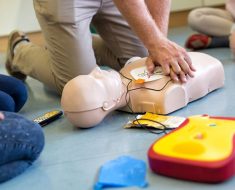Some people can have long periods of remission, when the rheumatoid arthritis (RA) is inactive, and there are few or no symptoms. Others may have symptoms nearly all the time for long periods.
Remission is more likely if a person is receiving effective treatment. If symptoms are ongoing, this may be a sign that treatment is not working.
Early signs and symptoms

RA usually begins gradually, with signs and symptoms developing over several weeks or months.
The first sign may be stiffness, tenderness, and pain in at least one joint, especially when the person tries to move the joint.
Symptoms usually appear first in the small joints, such as the ones in the fingers and toes.
The number of joints RA affects varies considerably, but for most people, it eventually affects at least five joints at the same time.
Unlike systemic lupus or gout, RA is an additive polyarthritis. This means that it affects more joints as time passes.
A person with sudden onset RA may go to bed healthy one night and wake up the next morning in a great deal of pain. They may be unable to get out of bed.
RA usually affects both sides of the body, for example, both knees or both hands.

RA causes inflammation not only in the joints but throughout the body. This can lead to a wide range of flu-like symptoms.
These may occur for some weeks or months before other symptoms appear, and they can continue with the other symptoms.
They include:
- fatigue
- a general feeling of being unwell
- low mood
- a fever, which is usually low grade (37°–38°C or 99°–100°F)
A higher fever may indicate another type of illness.
In the past, iron-deficiency anemia was common with RA. Now, however, the newer drugs that are available for treating the condition help to reduce this risk.
Some people experience a loss of appetite. Weight loss can result.
A significant number of people with RA also have secondary Sjögren’s syndrome. Symptoms of this condition include dry eyes and a dry mouth, which can lead to tooth decay. Sometimes a loss of vision is possible.
A doctor should check for the presence of these symptoms, as treatment can prevent further complications.
Flare-ups
RA symptoms tend to be intermittent, which means they come and go.
During a flare-up, the symptoms will be more intense and severe. During a time of remission, there may be no symptoms.
Flare-ups can occur at any time, but they tend to be more painful in the morning, when the person wakes up. As the day progresses, symptoms usually start to ease. Applying heat, such as a warm shower, may help.

The lungs: Inflammation may occur in the lungs or the pleura, which is the membrane around the lungs. There may be no symptoms, or the person may feel short of breath. If this occurs, a doctor can prescribe medications to reduce inflammation in the lungs. Lung changes affect up to 80 percent of people with RA, but most do not have symptoms.
The pericardium: This is a double-walled sac that contains the heart and the roots of the major blood vessels. Inflammation can lead to chest pain.
The eyes: Inflammation affects the tough, white outer coat over the eyeball, known as the sclera. Symptoms may include red, painful, and possibly dry eyes. Dry eyes may be a sign of secondary Sjögren’s syndrome.There may also be inflammation of the tear glands.
Nodular lesions: Some people with RA develop lumps under the skin, known as rheumatoid nodules. These are common around the elbows and forearms. They tend to form on pressure points, for example, where the arms rest on a table. They are not usually painful, but sometimes there may be pain. Nowadays, effective treatment makes nodules less likely.
The voice box: RA can affect the cricoarytenoid joint, which is in the larynx, or voice box. Inflammation can lead to hoarseness. Hoarseness can also happen if a person has secondary Sjögren’s syndrome.
Salivary glands: This can lead to a dry mouth and irritation or infection of the gums. A dry mouth can increase the risk of severe dental decay and tooth loss. If a health professional identifies this, they can help the individual to manage it.
Sore tongue: Having a dry mouth increases the chance of a yeast overgrowth in the mouth. A yeast infection normally causes the tongue to be white, but with dryness, the tongue can become tender, red, and cracked. People should speak to their doctor if they have a sore tongue.
Blood vessels: Inflammation can affect many parts of the body, resulting in damage to the nerves, skin, and other organs.
Complications
Systemic inflammation can have a wide-ranging impact.
The Centers for Disease Control and Prevention (CDC) note that people with RA also have a higher risk of:
- heart disease
- diabetes
- depression due to physical and social factors, such as employment difficulties
People with both obesity and RA have a higher risk of conditions that commonly occur with obesity, such as high blood pressure and high cholesterol.

Takeaway
RA can lead to a wide range of symptoms and complications.
Following a healthful diet that contains plenty of fresh fruit and vegetables can help relieve symptoms.
Raw or lightly cooked green vegetables and spices such as ginger and turmeric may help reduce inflammation and the symptoms it causes.
Cigarette smoking can trigger the development of RA. Avoiding smoking can help to stop the symptoms from becoming worse.
In addition, being physically active during times of remission can help to strengthen the body and the immune system and promote a feeling of well-being.
Source: Read Full Article





